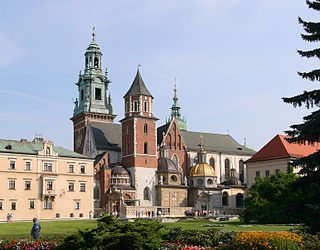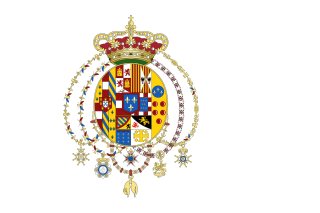The first Sicilian monarch was Roger I, Count of Sicily. The last monarch was King Ferdinand III of Sicily; during his reign, the Kingdom of Naples merged with the Kingdom of Sicily. The subsequent monarchs were Kings of the Two Sicilies.
See also:
| Roger I 1031–1101 r. 1071–1101 | Hauteville dynasty | ||||||||||||||||||||||||||||||||||||||||||||||||||||||
| Simon 1093–1105 r. 1101–1105 | Roger II 1095–1154 r. 1105–1154 | House of Hohenstaufen | |||||||||||||||||||||||||||||||||||||||||||||||||||||
| Roger 1118–1148 | William I 1131–1166 r. 1154–1166 | Constance I 1154–1198 r. 1194–1198 | Henry I 1165–1197 r. 1194–1197 | ||||||||||||||||||||||||||||||||||||||||||||||||||||
| Tancred I 1138–1194 r. 1189–1194 | William II 1155–1189 r. 1166–1189 | Frederick II 1194–1250 r. 1198–1250 | House of Capet | ||||||||||||||||||||||||||||||||||||||||||||||||||||
| Roger III 1175–1193 r. 1193 | William III 1186–1198 r. 1194 | Henry II 1211–1242 r. 1212–1217 | Conrad I 1228–1254 r. 1250–1254 | Manfred 1232–1266 r. 1258–1266 | |||||||||||||||||||||||||||||||||||||||||||||||||||
| Charles I 1226–1285 r. 1266–1282 | Conrad II (Conradin) 1252–1268 r. 1254–1258 | House of Barcelona | |||||||||||||||||||||||||||||||||||||||||||||||||||||
| Charles II (Mainland territories) 1254–1309 | Peter I 1239–1285 r. 1282–1285 | Constance 1249–1302 | |||||||||||||||||||||||||||||||||||||||||||||||||||||
| Eleanor 1289–1341 | Frederick II 1272–1337 r. 1296–1337 | James (II of Aragon) 1267–1327 r. 1285–1295 | |||||||||||||||||||||||||||||||||||||||||||||||||||||
| House of Trastámara | Peter II 1305–1342 r. 1337–1342 | Alfonso 1299–1336 | |||||||||||||||||||||||||||||||||||||||||||||||||||||
| Frederick III 1341–1377 r. 1355–1377 | Louis I 1337–1355 r. 1342–1355 | Eleanor 1325–1375 | Peter 1319–1387 | ||||||||||||||||||||||||||||||||||||||||||||||||||||
| Martin II 1356–1410 r. 1409–1410 | Eleanor 1358–1382 | ||||||||||||||||||||||||||||||||||||||||||||||||||||||
| Maria I 1363–1401 r. 1377–1401 | Martin I 1374–1409 r. 1395–1409 | Ferdinand I 1380–1416 r. 1412–1416 | |||||||||||||||||||||||||||||||||||||||||||||||||||||
| John I 1398–1479 r. 1458–1479 | Alfonso I 1396–1458 r. 1416–1458 | ||||||||||||||||||||||||||||||||||||||||||||||||||||||
| House of Habsburg | Ferdinand II 1452–1516 r. 1479–1516 | ||||||||||||||||||||||||||||||||||||||||||||||||||||||
| Joanna I 1479–1555 r. 1516–1555 | |||||||||||||||||||||||||||||||||||||||||||||||||||||||
| House of Savoy | Charles II 1500–1558 r. 1516–1554 | Ferdinand 1503–1564 | |||||||||||||||||||||||||||||||||||||||||||||||||||||
| Philip I 1527–1598 r. 1554–1598 | Charles 1540–1590 | ||||||||||||||||||||||||||||||||||||||||||||||||||||||
| Catherine Michelle 1567–1597 | Philip II 1578–1621 r. 1598–1621 | Ferdinand 1578–1637 | |||||||||||||||||||||||||||||||||||||||||||||||||||||
| Victor Amadeus 1587–1637 | Philip III 1605–1665 r. 1621–1665 | Maria Anna 1606–1646 | Ferdinand 1608–1657 | ||||||||||||||||||||||||||||||||||||||||||||||||||||
| Charles Emmanuel 1634–1675 | Maria Theresa 1638–1683 | Charles III 1661–1700 r. 1665–1700 | Leopold 1640–1705 | ||||||||||||||||||||||||||||||||||||||||||||||||||||
| Victor Amadeus 1666–1732 r. 1713–1720 | Louis 1661–1711 | Charles IV 1685–1740 r.1720–1735 | |||||||||||||||||||||||||||||||||||||||||||||||||||||
| Philip IV 1683–1746 r. 1700–1713 | |||||||||||||||||||||||||||||||||||||||||||||||||||||||
| Charles V 1716–1788 r. 1735–1759 | |||||||||||||||||||||||||||||||||||||||||||||||||||||||
| Ferdinand III 1751–1825 r. 1759–1816 | |||||||||||||||||||||||||||||||||||||||||||||||||||||||








